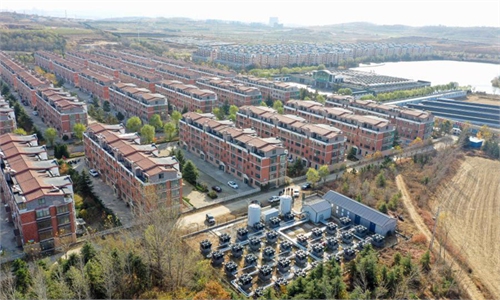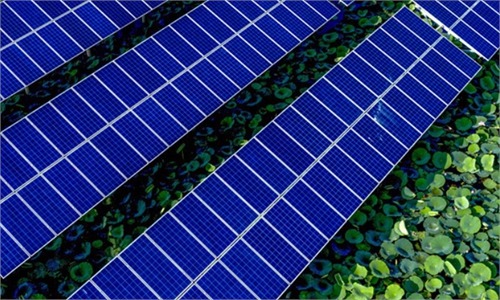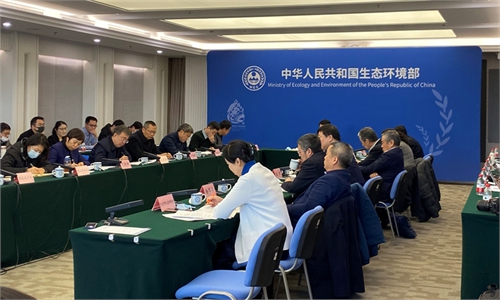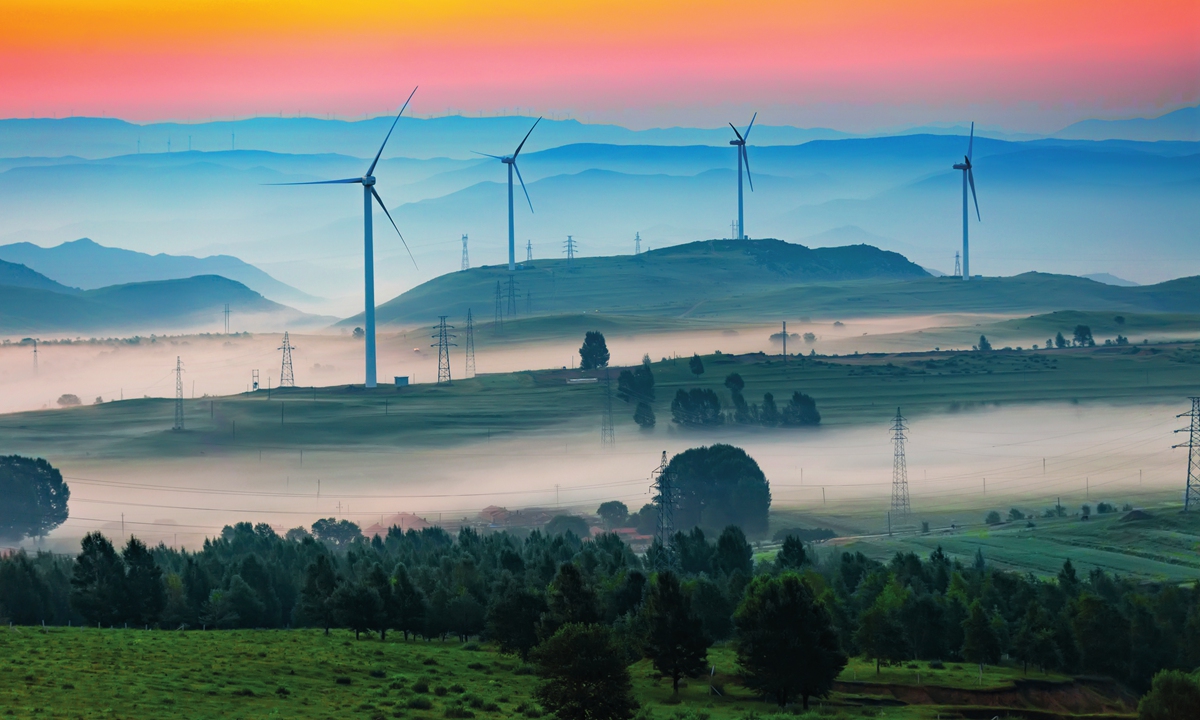
Wind power plant in China Photo: IC
China has announced its goal to meet its carbon emissions peak before 2030 and realize carbon neutrality by 2060. While such ambition is welcomed by the world, it has brought extra pressure, especially for China's state-owned companies, which will carry a burden for heavily emitting industries that matter to the country's functioning.
To fulfill the goal of carbon reduction and beating air pollution, state-owned companies must make various efforts, from advancing technologies that produce less greenhouse gases or pollution, accelerating energy transition and being accountable to more social responsibilities such as planting more trees to create carbon sink.
Observers told the Global Times under such circumstances, many state-owned enterprises are still "watching," - some of them are still learning how to set their goals, where to start and how to implement them.
But challenges also mean opportunities.
China's state-owned companies can be role models for cutting emissions thanks to their solid capabilities, allowing them to afford technical progress and other measures; moreover, they are more sensitive to the country's policies, experts noted.
Many of the companies have already sprung into action, being a role model for other companies in their respective industries.
Representatives contacted by the Global Times said that facing environmental inspections and fulfilling emission reduction goals have become a part of their daily work. In the 14th Five-Year Plan (2021-25), companies will expand their investment into green development.
In December, China announced further commitments for 2030, including lowering carbon dioxide emissions per unit of GDP by over 65 percent from the 2005 level, increasing the share of non-fossil fuels in primary energy consumption to around 25 percent, increasing the forest stock volume by 6 billion cubic meters from the 2005 level, and bringing its total installed capacity of wind and solar power to over 1.2 billion kilowatts.
Extra pressure
In China, the proportion of state-owned enterprises is much higher in the industries that are considered the lifeblood of the national economy and people's livelihoods, such as the energy and raw materials sectors, which are also the largest producers of carbon emissions. For instance, in 2019, the carbon emissions of China's steel industry accounted for more than 60 percent of the total carbon emissions of the global steel industry and about 15 percent of the total carbon emissions in China. The manufacturing industry made up the highest carbon emissions in China, China Economic Herald reported.
According to data from the World Steel Association, among the top 10 steel companies in global crude steel production in 2019, Chinese steel companies occupied 6 seats and four of them were state-owned enterprises. The output of four major state-owned enterprises, Baowu Group, HBIS Group, Ansteel, and Shougang Group accounted for 74.4 percent of the total output of the six Chinese enterprises.
Therefore, in the end, much of the pressure on energy conservation and emission reductions in China will directly fall onto state-owned enterprises.
Ma Jun, director of the Beijing-based Institute of Public and Environmental Affairs, told the Global Times that stress for state-owned companies have three sources.
Nationally, carbon neutrality has become a national core strategic goal, and the subsequent steps of implementation will be divided into small ones that need to be achieved by regional and industrial enterprises.
Stress will also come from the market, for example, the climate investment and financing policies drawn up by the China Banking and Insurance Regulatory Commission.
Many state-owned enterprises in China still lack related awareness, experience and abilities to start the action, according to Ma. "These enterprises need to adapt to the trend quickly."
Ma set examples of the routes for cutting emissions for certain key industries.
In the thermal power industry, the ultimate goal is to completely abandon fossil energy. However, the challenge lies in the large scale of the industry. More work should be done on how to develop alternative energy sources, how to make the power grid mechanism more flexible and how to make existing coal-fired power plants switch to serve new energy structures, according to Ma.
In high-emission industries such as steel, to reduce carbon emissions, steel can be made through scrap metal rather than starting the long production process from iron ore. However, it is not clear what should be done in the next step to achieve carbon neutrality in the steel industry.
Various efforts
China's state-owned companies have been applying their advantages in various ways to realize the goal of carbon reduction.
For Sinopec Jinan Company, realizing green production has become one of its major mission nowadays.
Founded in 1971 and widely known as the Jinan Refinery by locals, the company was previously located in the suburban industrial region of the capital of East China's Shandong Province. However, since the beginning of this century, the expansion of Jinan has amalgamated the company into the city's urban area.

A view of the plant of Sinopec Jinan Company in East China's Shandong Province Photo: Courtesy of the Sinopec Jinan Company
It means greater pressure for heavy polluters being surrounded by the city. Jinan Iron & Steel Co Ltd, another heavy polluter that was previously located next to Jinan Refinery, launched its relocation to Rizhao, a coastal city in Shandong in 2017. Advocacy for closing or relocating Jinan Refinery has ceased to remain silent over the past two decades.
Urban residents' concerns have not come from nowhere. "When I was a child in the 1990s, whenever it rained, you could see oil floating in the rainwater on the ground," Han Xinying, a worker at Jinan Refinery, told the Global Times. The region has also suffered from severe air pollution.
But the situation is changing.
In 2018, Sinopec, China's petro-giant and parent corporation of the Jinan Refinery, published a plan aiming to build a green corporation of "clean, efficient, low-carbon and recycling," together with related measures.
The Jinan Refinery thus began to take its advantage of being located in a capital city and strives to build a model of a "safe, reliable, clean and environmentally friendly" urban refinery.
The company continues to carry out clean production inspections, promotes oil quality upgrades, and implements the green enterprise action plan. Some of its product bases and equipment sets are from Sinopec, according to a statement from the Jinan Refinery to the Global Times.
"The refinery launched a 'green water and blue-sky project,' a few years ago," Han said. "The emitted water, after clarification, could meet the standard of keeping fish."
Xia Jixiang, general manager of the Jinan Refinery, told the Global Times that since the 13th Five-Year Plan (2016-20), the company has invested almost 1 billion yuan in tackling and preventing pollution and cutting emissions. In the next five years, the company will find its approximate position in the city's development, continue to increase green development investment and build an urban garden-like factory.
Sinopec is not the only petro-corporation in China that eyes green development. For instance, China National Petroleum Corporation has included addressing climate change into its development plan. The company has supplied 181.3 billion cubic meters of natural gas in 2019, accounting for 65 percent of the domestic market. It also helped 1 million households convert their power supply from coal to natural gas that year.
China National Offshore Oil Corporation (CNOOC), based on its technical advantages of offshore drilling platform construction, launched its first offshore wind power project in East China's Jiangsu Province in April 2019.
In September 2020, the project was successfully connected to the grid for power generation, and was expected to provide approximately 860 million kwh of on-grid power annually. Compared with conventional coal-fired thermal power units with the same power generation capacity, it can save 279,000 tons of standard coal and reduce carbon dioxide emissions by 571,000 tons every year.
CNOOC is also discussing plans to lead in natural gas, which is produced during the process of offshore oil extraction and sent to the land for urban gas supply to replace power from coal combustion, an environmental observer told the Global Times.
PetroChina launched its first carbon-neutral forest project in Daqing, Northeast China's Heilongjiang Province last November, in order to promote its green and low-carbon transformation, according to the official website of Daqing Municipal People's Government.
Carbon neutral forests are an ecological compensation method to neutralize carbon emissions through afforestation.
The forest covers an area of 510 mu (34 hectares) and plans exist to plant 21,260 trees in two phases in accordance with the construction principle of multiple tree species, stratification and considering biodiversity. It is expected to neutralize the estimated 3,344 tons of carbon emissions in 2020 and 2021.
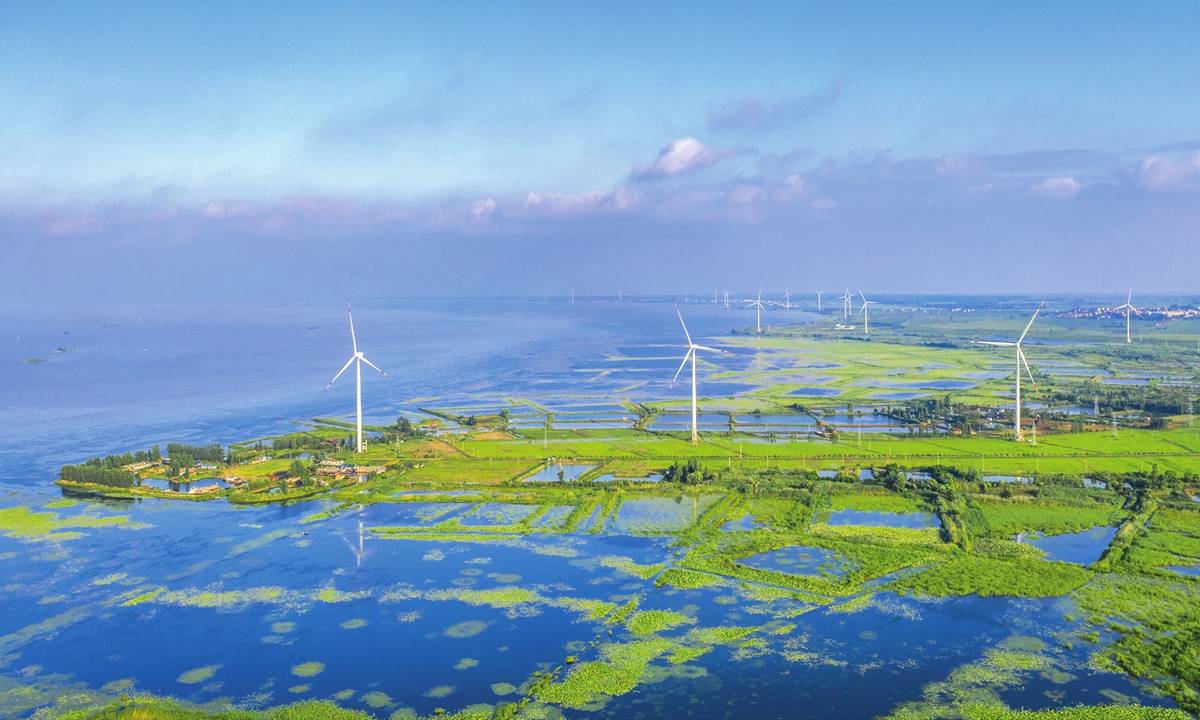
Wind power plant in China Photo: IC
Systemic advantages
"State-owned enterprises are often the key group constrained by policy, and more sensitive to policy, which may help them implement changes more quickly," Ma said.
Moreover, companies received support from the nation.
For example, large-scale state-owned enterprises are engaged in the policy-making process of China's Banking and Insurance Regulatory Commission about climate investment and financing, and they are more inclined to green environmental protection projects in terms of investment and loans.
China's first compliance cycle of the national carbon market for the power generation industry officially started on January 1, a start for the country to open its carbon market, being an efficient and bargain way to tackle the emissions issue.
"This quota plan, for the first time at the national level, consolidates the responsibilities of controlling greenhouse gas emissions by companies," Li Gao, head of the climate change department at the MEE, told media on January 5.

